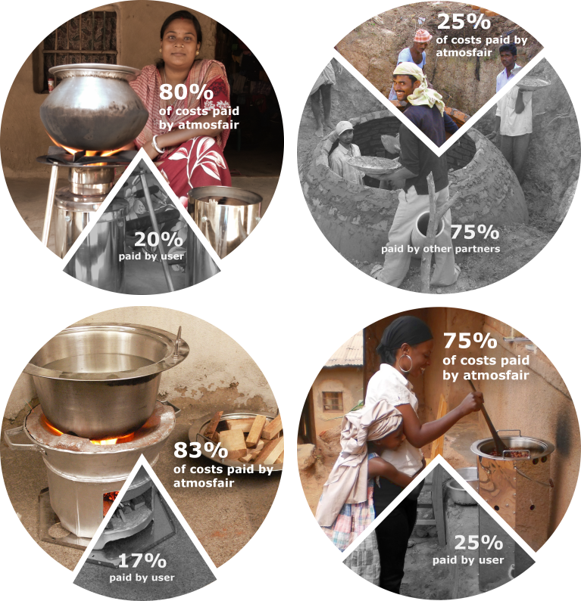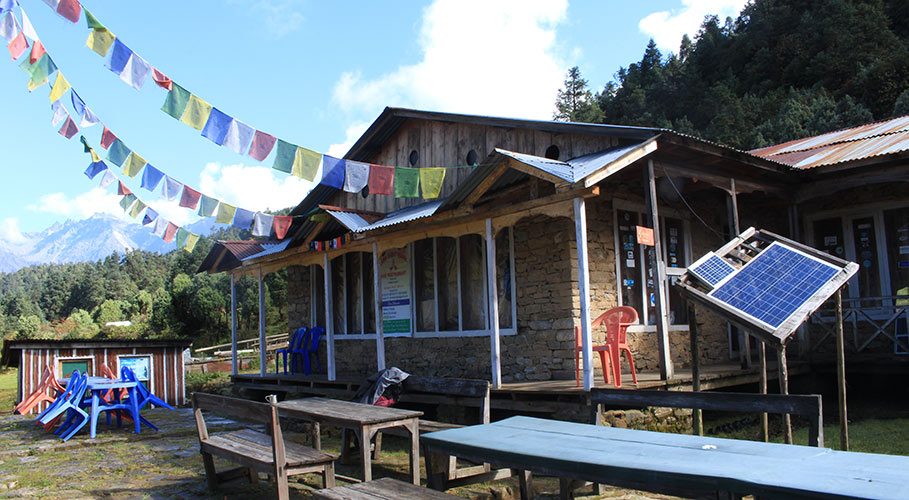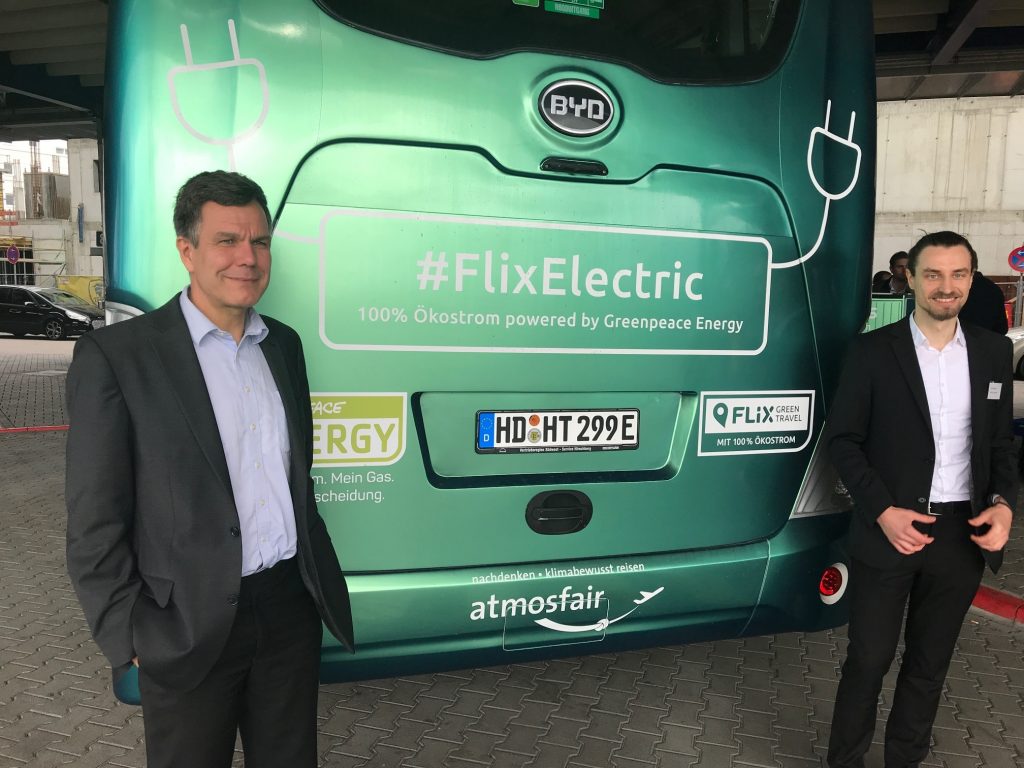A number of standards exist on the market for carbon offset projects. They aim to ensure the effectiveness and added benefits of mitigation projects. However, as a project developer with more than 10 years of experience, atmosfair has found that no existing standard achieves the goal of ensuring the hallmarks of a “good” offsetting project to a satisfactory degree: climate integrity, sustainability, additionality (proof that funding from carbon offsetting was necessary for economic viability), reliability, and co-benefits for sustainable development. As a consequence, atmosfair has developed our own set of guidelines that go beyond existing standards.
Offsetting standards: CDM + Gold Standard + X

This overview, created internally by atmosfair, shows that no single standard scores beyond 80 percent of possible points. To address this shortcoming, we have developed our own set of criteria by which we plan, register, and evaluate our projects. This was done in collaboration with the German Federal Ministry of the Environment. The resulting formula combines CDM and Gold Standard with our own criteria “Plus X”, which are applied to projects that support the transformation towards a sustainable, climate-friendly economy and society.
Specifically, atmosfair’s Plus X critieria include a metric to quantify additionality, a factor that is notoriously hard to measure and does not receive adequate attention from either standard; the requirement that projects are coherent with host regions’ development goals; involvement of local communities to maximize development potential; and exclusion of technologies that are risky or not suitable for offsetting.
Additionality: does your money enable carbon mitigation?
Not all projects that avoid carbon emissions should receive funding through offsetting programs. Why? Because they are economically viable on their own. Large scale renewable energy projects such as wind parks or hydroelectric power plants generate income to recoup investments. Steering offsetting money to those projects will likely not trigger additional carbon savings. The opposite case would be an efficient cookstove that is sold to a family in rural Rwanda at a highly subsidized rate. atmosfair’s Save80 stove reduces carbon emissions by using 80 percent less firewood than traditional three stone fires. In this case, funding from offsetting programs are essential to finance the production and distribution of the stoves. Without it, this technology would not be available to poor households, and carbon savings would not be realized. Thus the percentage of project costs funded through offsetting – a metric we call the carbon ratio – is indicative of how additional a project is. Depending on technology, a minimum carbon quota of 10-50 percent should be achieved to ensure additional carbon savings.
A second key factor in determining additionality is the percentage of offsetting contributions that are directly spent on mitigation projects. None of the common standards require documentation of the use of funds. Transparency and control over how money is spent can only be achieved when project development, financing, and operations are done in conjunction. By running our own climate mitigation projects, atmosfair is able to provide detailed breakdowns and documentation of project costs by categories, as well as keeping costs low by cutting out middlemen. We have consistently achieved our target of directing 90 percent of our offsetting contributions towards projects.

The right technology at the right time for every community
To effectively combat global warming, we have to decarbonize fast. That means using climate mitigation technologies that are appropriate for the development stage and goals for each country and community that we work with. Taking steps to ensure that climate and development goals are aligned helps drive acceptance and adoption of clean technologies, and it increases the chances that investments are impactful and sustainable – cornerstones of effective carbon mitigation. To achieve this, we use technology that is adapted to local habits and provide durable products that will save carbon for many years. Depending on the region, this could mean building a local solar grid or equipping individual households with solar home systems. It could mean steel cookstoves or clay ovens, whichever is best suited for local foods.
We partner with local organizations and stakeholders to develop bespoke plans for each community, assessing local resources to maximize intended effects and minimizing unintended ones. We involve local businesses and drive local value chains to generate income and sustainable development. For example, crop residues from local mustard farms in the Indian district of Tonk were going to waste. A biomass power plant that we built with a local partner not only replaces coal with mustard residues to produce clean power, it also increases farmers’ income by 40 percent.
Reducing technology-related risks
The effectiveness of carbon mitigation projects can be undermined because of technologies that do not deliver the desired results, and because of unintended effects. Existing standards do a poor job of vetting project types and technologies, so atmosfair goes beyond those standards in our own assessment of suitable Projects. Technologies we deem unsuitable for carbon offsetting include afforestation and reforestation, agricultural projects, wind farms (with the exception of pioneering projects), first generation photovoltaic systems with mercury lamps or lead accumulators, carbon sequestration, non-sustainable biomass (danger of shortages or competing use), HCF-23 and SF6, nitric acid and adipic acid replacement, genetically modified organisms (GMO), and palm oil.
Going one step further: projects with multiple benefits
In addition to climate integrity, atmosfair projects aim to foster development and achieve sustainability. A few examples:
- In India, where a lot of restaurants and small businesses use charcoal, we distribute efficient wood gas stoves. These not only reduce firewood use for households, but produce charcoal as a byproduct, which can be sold to supplement family incomes. The collection and delivery of coal also provides employment for 120 workers..

- In Nigeria, we started with the distribution of efficient steel cookstoves to reduce the use of firewood and relieve pressure on the country’s rapidly declining forests. To support economic development and knowledge transfer, we then cooperated with a local partner to develop and produce stoves in Nigeria, with locally sourced, partially recycled materials. Our goal is to take the current manual production process to scale with a factory to enable more low-income families access to energy-efficient cooking.
- In Dar es Salaam, Tanzania, atmosfair is addressing the problem of excess greenhouse gases caused by landfills. A new composting plant, built on behalf of the municipality of Hamburg and expected to go into operation in 2020, will turn organic waste from markets into nutrient-rich organic fertilizer that can be sold to local farmers. A waste collection system will be set up at two local markets to collect organic matters, with the option of integrating more markets.
- Nepal was hit by devastating earthquakes in 2015. In addition to disaster relief with solar home systems and micro biogas plants, atmosfair partnered with forum anders reisen to lay the foundations for a long-lasting sustainable tourist infrastructure. 11 lodges were equipped with tourist-friendly amenities and green technologies to create the first climate friendly trek, stretching over 7 villages, 46 kilometers, and 7096 meters in altitude.

- FlixBus is a player in sustainable mobility: Long-haul busses are one of the most climate-friendly modes of transport, and the operator offers riders the option of offsetting emissions with atmosfair. Not content with the status quo, FlixBus and atmosfair continually work to find new ways of avoiding carbon and push ahead of the industry. The latest pilot project saw FlixBus debut an electric long-haul bus, the first of its kind in Germany, in cooperation with atmosfair and energy provider Greenpeace Energy. In addition to providing emission-free rides, this transformative project funded the installation of charging stations and demonstrated the viability of electric busses.



 Share
Share Tweet
Tweet